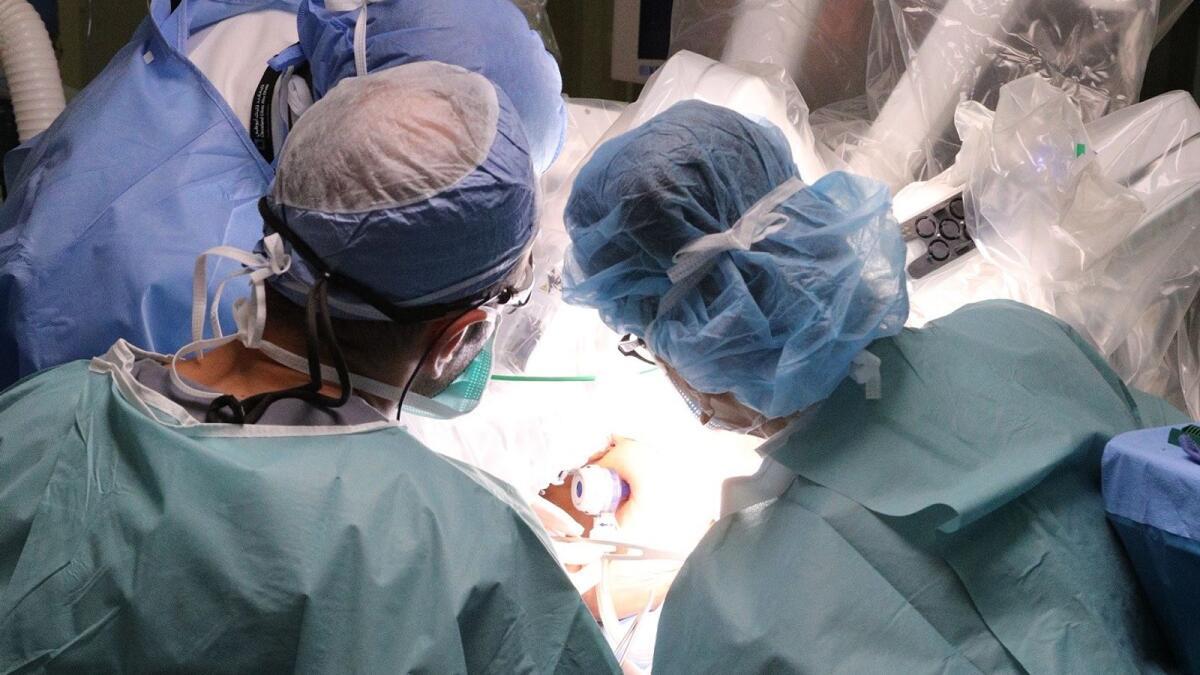
UAE: Minimally Invasive Robotic Transplant Saves 78-Year-Old Battling End-Stage Renal Disease
The pioneering kidney transplant was a life-changing procedure for a 78-year-old Emirati patient who had been battling end-stage renal disease and relying on haemodialysis (a treatment to filter wastes and water from blood, as the kidneys do when they are healthy) for three long years.
To give the patient a new lease of life, doctors at the Cleveland Clinic Abu Dhabi transplanted two kidneys from a single deceased donor. The patient, who had been managing secondary diabetes mellitus in addition to his renal disease, was considered a high-risk candidate for traditional open surgery.
Unlike the usual approach of transplanting one kidney, this case required both donor kidneys because, individually, they weren't strong enough to meet the patient's needs. By transplanting both kidneys, the physicians were able to optimise the patient's renal function, a critical factor in his overall recovery and long-term health.
This technique is especially advantageous in cases where donor kidneys are smaller or have reduced individual function, a common occurrence with organs from deceased donors.
Minimally invasive, quick recoveryRobotic-assisted technology in this complex procedure has established a new standard in transplant surgery, offering patients a minimally invasive option, faster recovery, and improved long-term results.
Following numerous complications during dialysis, the patient is now showing significant signs of recovery post-surgery.
Dr Bashir Sankari, Institute Chair of Urology at Cleveland Clinic Abu Dhabi, who led the procedure, emphasised the significance of this latest advancement. He said, "Robotic bilateral kidney transplant allows us to optimise the patient's renal function by transplanting two kidneys simultaneously and provides the potential for greater longevity and improved outcomes for patients who might otherwise face compromised organ function.”
Technique help surgeonsMeanwhile, medics also explained that the robotics technology enables high-definition, 3D visualisation of the surgical site, allowing the transplant team to achieve exceptional precision in positioning the kidneys and connecting the blood vessels and urinary tract.
Additionally, the minimally invasive approach greatly lowers the risk of infection and postoperative complications commonly associated with traditional transplant procedures.
Dr Mohamed Eltemamy, lead robotic surgeon at Cleveland Clinic, Ohio said,“Robotic bilateral kidney transplantation represents a significant advancement in transplantation, expanding the donor pool and reducing waiting times. The robotic technique offers enhanced precision, magnified 3D HD vision, and flexibility, allowing us to perform the procedure through a single small incision, rather than multiple large ones. This leads to better outcomes, quicker recovery, and a more efficient transplant process.”
Healthcare professionals at the capital's Cleveland Clinic also highlighted that the patient was discharged from the hospital sooner than if he had undergone a conventional transplant.
Dr Georges-Pascal Haber, CEO of Cleveland Clinic Abu Dhabi, expressed pride in the team's accomplishment and the hospital's role as a leader in medical innovation.“The successful execution of this robotic bilateral kidney transplant highlights our commitment to delivering world-class care and pushing the boundaries of medical excellence. The procedure is not only a significant milestone for Cleveland Clinic Abu Dhabi but also for the entire region. We are proud to offer our patients access to the most advanced surgical techniques, which will undoubtedly improve their quality of life,” he said.

Legal Disclaimer:
MENAFN provides the
information “as is” without warranty of any kind. We do not accept
any responsibility or liability for the accuracy, content, images,
videos, licenses, completeness, legality, or reliability of the information
contained in this article. If you have any complaints or copyright
issues related to this article, kindly contact the provider above.


















Comments
No comment